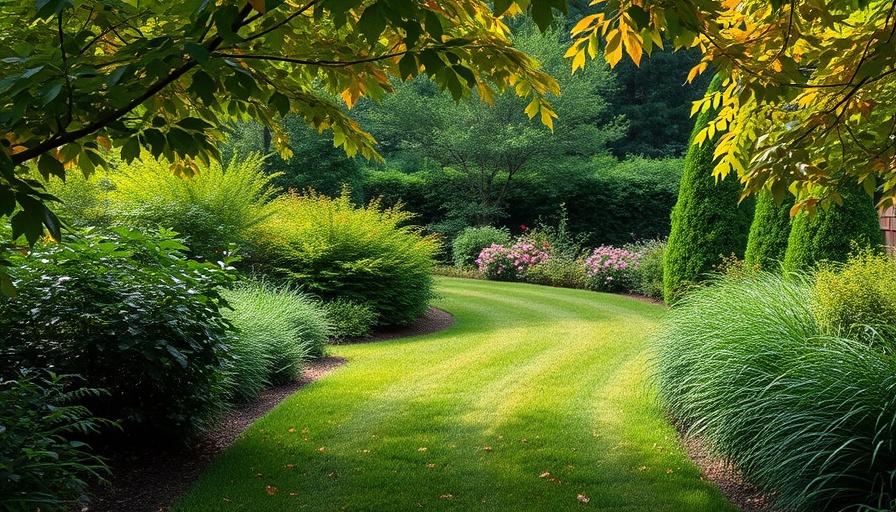
Transforming Your Outdoor Space: The Allure of Backyard Trail Design
Backyard trails provide more than mere pathways; they create scenic routes that enhance the beauty and functionality of your outdoor spaces. Whether you're looking for a charming garden path or a rustic woodland trail, effective backyard trail design can significantly amplify the aesthetic appeal and practicality of your yard. Imagine having a pathway weaving through lush greenery or stones creating a stunning, durable structure that guides visitors through your home's natural retreat.
Why Design a Backyard Trail?
A well-planned backyard trail fulfills multiple purposes: it provides access to various areas of your property, improves drainage, and seamlessly integrates with your existing landscape. For homeowners in Long Island and similar locales, incorporating eco-friendly and sustainable practices into this design not only enhances the trail’s longevity but also promotes the local ecosystem.
Key Elements in Designing Your Trail
Successful backyard trail design requires careful consideration of several elements. Here are a few essential aspects:
Understanding Your Purpose
Your first step should be defining the purpose of your trail. Are you crafting a beautiful garden path, a functional walkway, or an adventure-filled woodland trail? This purpose will guide the trail's width, layout, and materials. For instance:
- Garden Path: A meandering design with stepping stones offers aesthetic appeal.
- Functional Walkway: Opt for a straight, structured path leading to your patio or pool.
- Woodland Trail: Select natural, winding paths that blend seamlessly with your landscape.
Choosing the Right Location
Next, evaluate your yard for the ideal trail placement. Consider natural foot traffic paths, elevation changes, and existing landscape features. Observing where people naturally walk can provide valuable insights into ergonomic design. Incorporating elements like elevation changes not only adds interest but also enhances the trail's functionality by managing drainage effectively.
Selecting Quality Materials
The materials you choose significantly impact both the appearance and durability of your trail. For local Long Island homes, here are notable options:
- Gravel: Budget-friendly and straightforward to install.
- Flagstone: A natural and elegant choice.
- Brick or Pavers: Structured and low-maintenance.
- Wood Chips or Mulch: Perfect for creating a soft, natural woodland trail.
- Stepping Stones: Ideal for winding garden paths.
A Step-by-Step Guide to Building Your Backyard Trail
Building a trail can be a rewarding DIY project. Follow these steps for a successful installation:
- Mark the Pathway: Use spray paint or garden hoses to outline the desired trail shape, keeping width in mind based on its purpose.
- Prepare the Ground: Clear away grass, weeds, and debris while excavating to provide a stable base.
- Lay Your Base Material: For gravel paths, add a compacted base layer for stability and evenness.
- Install Your Trail Surface: Select the appropriate surface material, ensuring it aligns with your vision and purpose.
Embracing Sustainable Practices
As a Long Island homeowner, embracing sustainable practices in your backyard trail design is essential. Choose native plant species for nearby landscaping to foster local wildlife and enhance biodiversity. Select permeable materials that promote drainage and prevent runoff, contributing to an overall healthier ecosystem.
Get Started on Your Dream Trail Today!
A backyard trail not only beautifies your outdoor environment but also creates a personal retreat where family and friends can enjoy the healing power of nature. By investing time in thoughtful design and sustainable choices, you enhance your property's value and contribute positively to the local ecosystem. Start planning your perfect trail today!
 Add Row
Add Row  Add
Add 




Write A Comment